Waldorf takes its Iridium Synthesizer into new expressive sonic worlds with a new polyphonic aftertouch keyboard version with more hands-on controls
With the Quantum, Waldorf has a true synthesis monster in its portfolio. Granular, sampling, resonator, FM as well as wavetable synthesis in a single instrument. Then came the Iridium without analog filters but in a more compact desktop format and cheaper.
Waldorf has today unveiled another Iridium. Yes, there is room for two Iridiums. One with a 49-keys poly aftertouch pressure-sensitive keyboard and more interface controls. And again developed by mastermind Rolf Wöhrmann and interface designer Axel Hartmann.

Waldorf Iridium Keyboard
The Iridium Keyboard (851 mm (W) x 355 mm (D) x 110 mm (H)) continues the concept of the Quantum and Iridium. Once again without analogue filters but with 16 voices and with the highlight of the polyphonic aftertouch pressure sensitive keyboard.
According to Waldorf it’s an all-new 49-key FATAR TP/8SK semi-weighted keybed that premiers in the Iridium keyboard version. So we will definitely see more synthesizers with this innovative keybed in the future. It’s going to be an exciting future.
This new feature has a massive sonic impact on the engine, allowing you to discover tons of new timbres. Sounds can thus be articulated differently per note and thus very expressively performed. This new feature is accompanied by full MPE support.
Performers can conceivably play and hold down any number of keys simultaneously, subsequently moving each finger individually. In other words, individual keys are affected by the pressure applied by each finger, thereby creating, for instance, individual data streams for modulation purposes, whereas with monophonic (Channel) aftertouch all notes played will respond in the same way
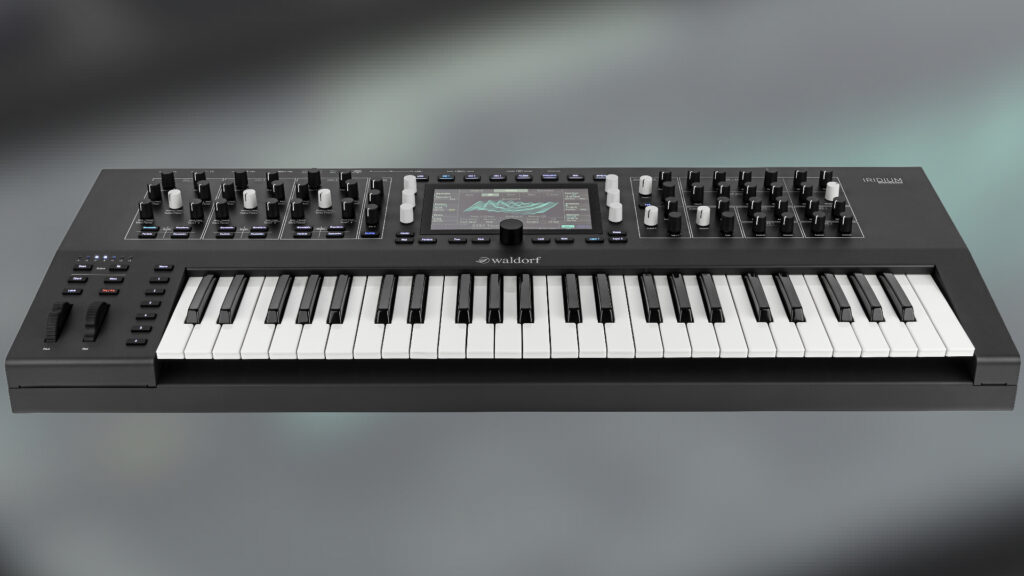
More Hands-On
Also different from the Iridium Desktop is the extended front panel. It features more knobs giving you one-knob-per-function control over your parameters as well as six freely-programmable macro buttons adjacent to the Pitch and Mod (modulation) wheels. With these, users can define functions from a wide range of features for additional performance control.
Again onboard is the high-resolution touch screen with which you can delve into every little detail of the engines.
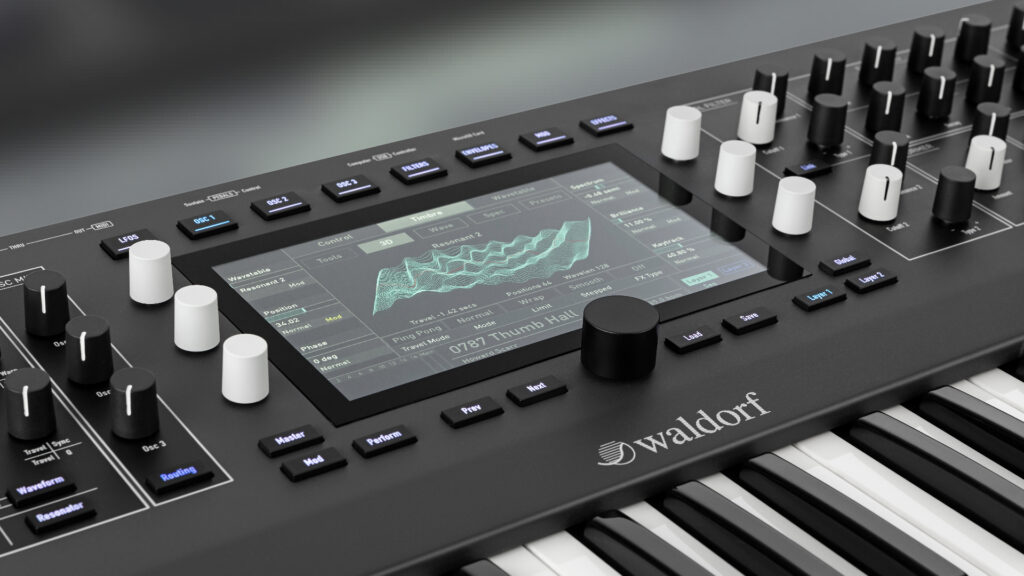
A Synthesis Power-horse
The Iridium Keyboard is just as powerful on the synthesis side as the Iridium desktop. It features five mighty synthesis engines for each of its three oscillators including wavetable, virtual analog, particle with the focus on sampling and granular sampling, resonator and the latest Kernels. It can be described as a modular FM synth with 6 sub-oscillators than can be interlinked through FM at audio rate.
Then, you will find three true stereo path digital filters with various types ranging from cmb, classic Waldorf high- and band-pass, and notch filters from the Largo and Nave software synthesizers. Plus, there are PPG models to achieve the classic wavetable sounds from the past. It also comes with signal enhancer effects such as drive and bit-crushers.
Modulation side, you find six full-customizable envelopes, six LFOs… and all this operable via modulation matrix that gives you now even more sonic options thanks to the poly aftertouch support.

Connectivity
Connectivity-wise, the Iridium Keyboard communicates with the outside world, thanks to two audio inputs (for processing external signals); 4 CV inputs as well as Gate In and Trigger In connections (for forwarding external signals to the Mod Matrix). There is also a clock in and clock out connections, USB and DIN MIDI connection as well as USB host port. Thanks Waldorf for adding it. Further, there are control and sustain pedals inputs, two audio outputs and a headphone output with a dedicated volume control.
The new Iridium Keyboard ships with 1680 sounds programmed by well-known sound designers: Howard Scarr, Richard Devine, Kurt Ader, BT, Matt Johnson, Reinhold Heil, Jörg Hüttner, Mike Huckaby, Thorsten Quaeschning and Sascha Dikiciyan.
Availability
A very exciting release from Waldorf. I’m sure a polyphonic aftertouch keyboard harmonizes perfectly with the Iridium engine. The feature engine has not been expanded here, but this keyboard upgrade takes Rolf Wöhrmann’s engine to another level. And I think it is showing its full potential now.
Waldorf Iridium Keyboard is available now for 2899€.
More information here: Waldorf Music
Available at our partner

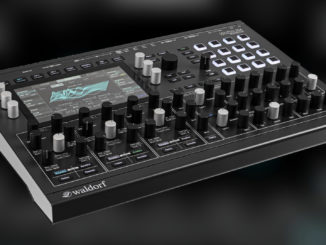
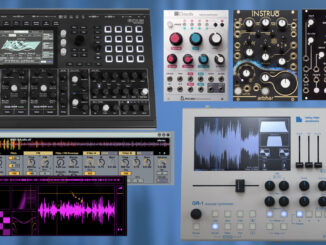
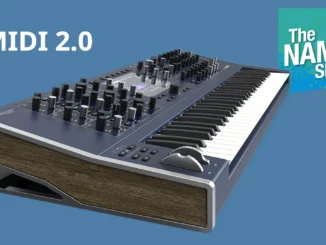
Hm… Didnt expect this. I owned the Quantum a while back, was waaaay to digital and spikey sounding for my taste but was a very deep synth. Was super fun to program but I found myself using a few outboard plugins/pedals to get it to tame the sound to something pleasent on the ears. Ultimately sold it and now I have a polybrute which isnt as deep but just sounds nice. Yes, analog is warmer but I also have a Hydrasynth which is also digital and it was more pleasant than the Quantum and a waaaay lower price point.
The Quantum is such a lovely synth. If I was going to buy one, probably just save for the Quantum but I like that Waldorf provided options. The weird “drum pads” on the Iridium always seemed like an odd choice.